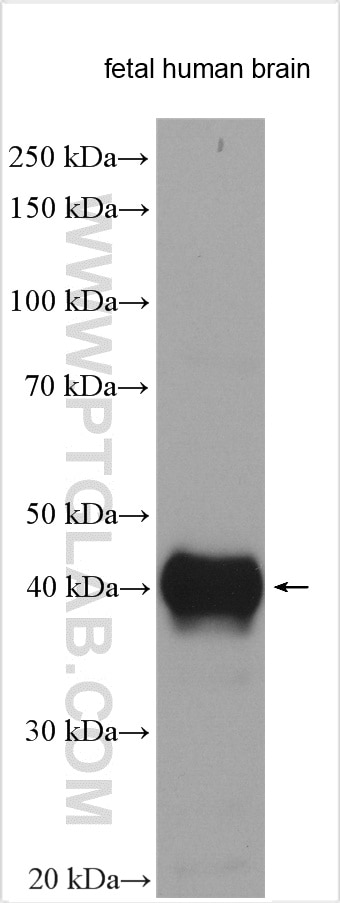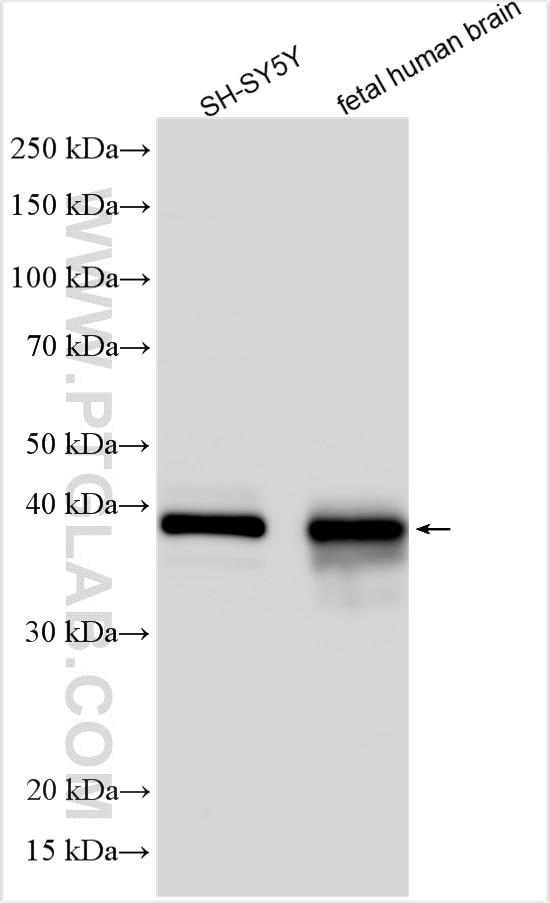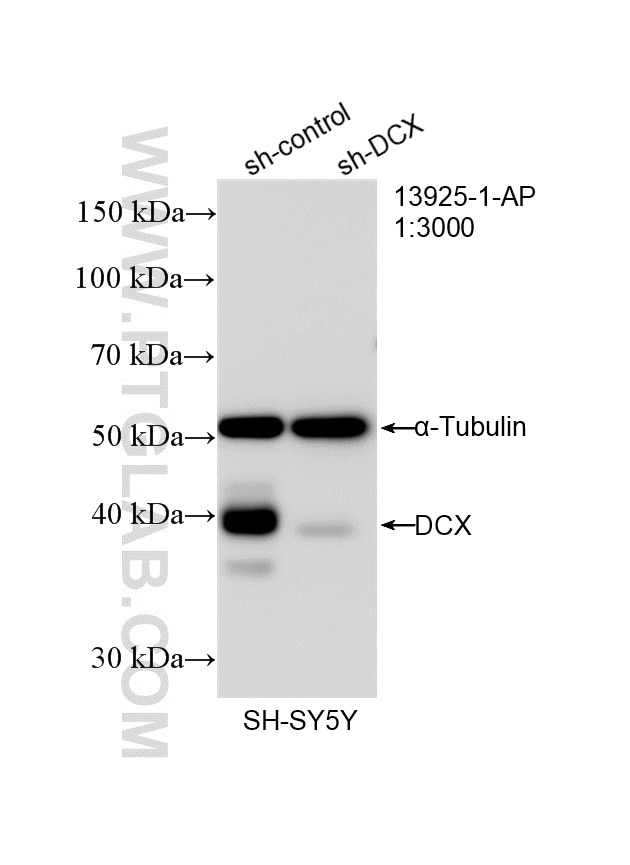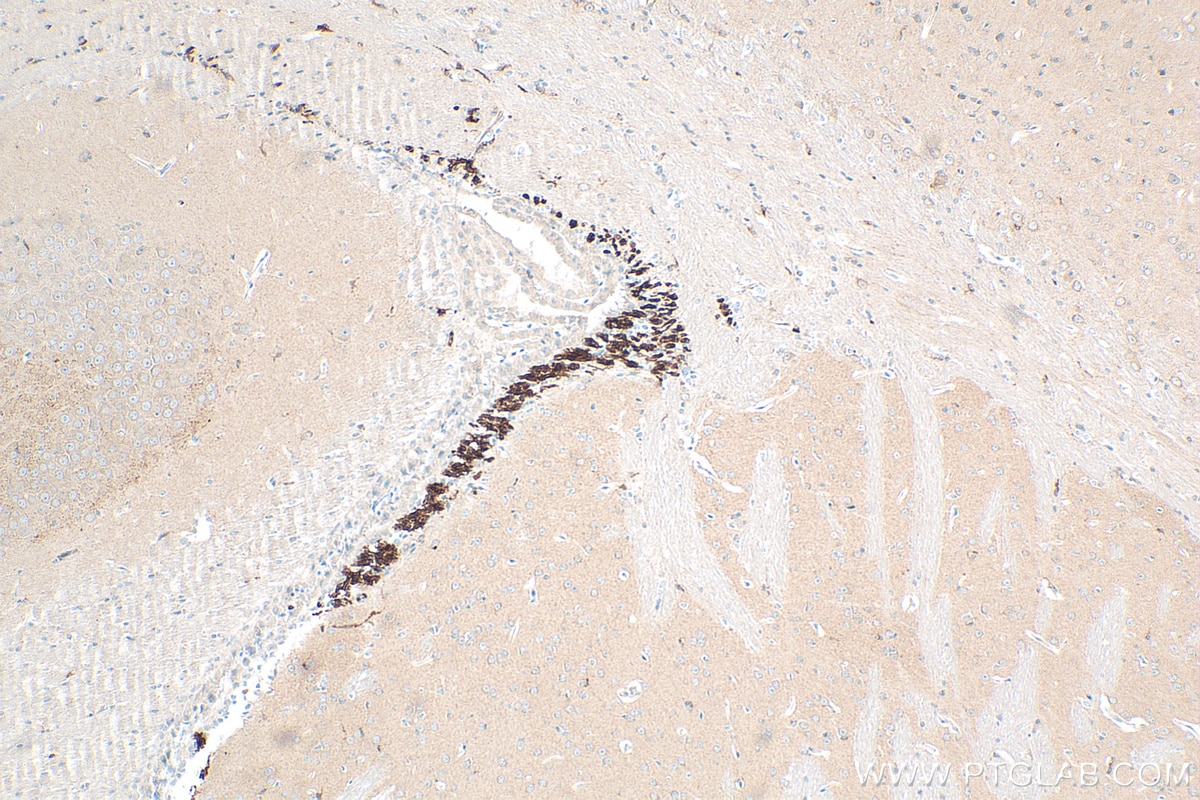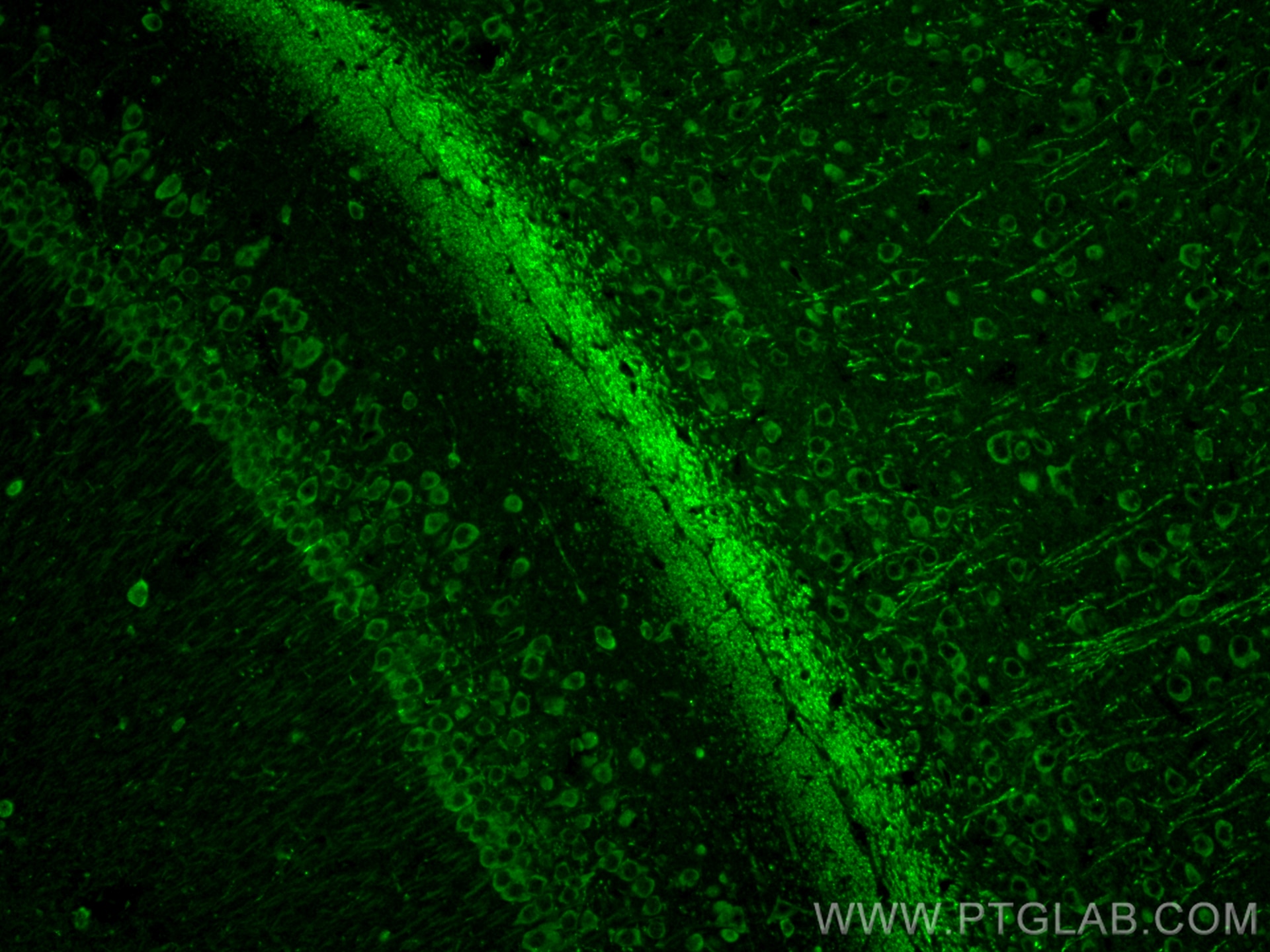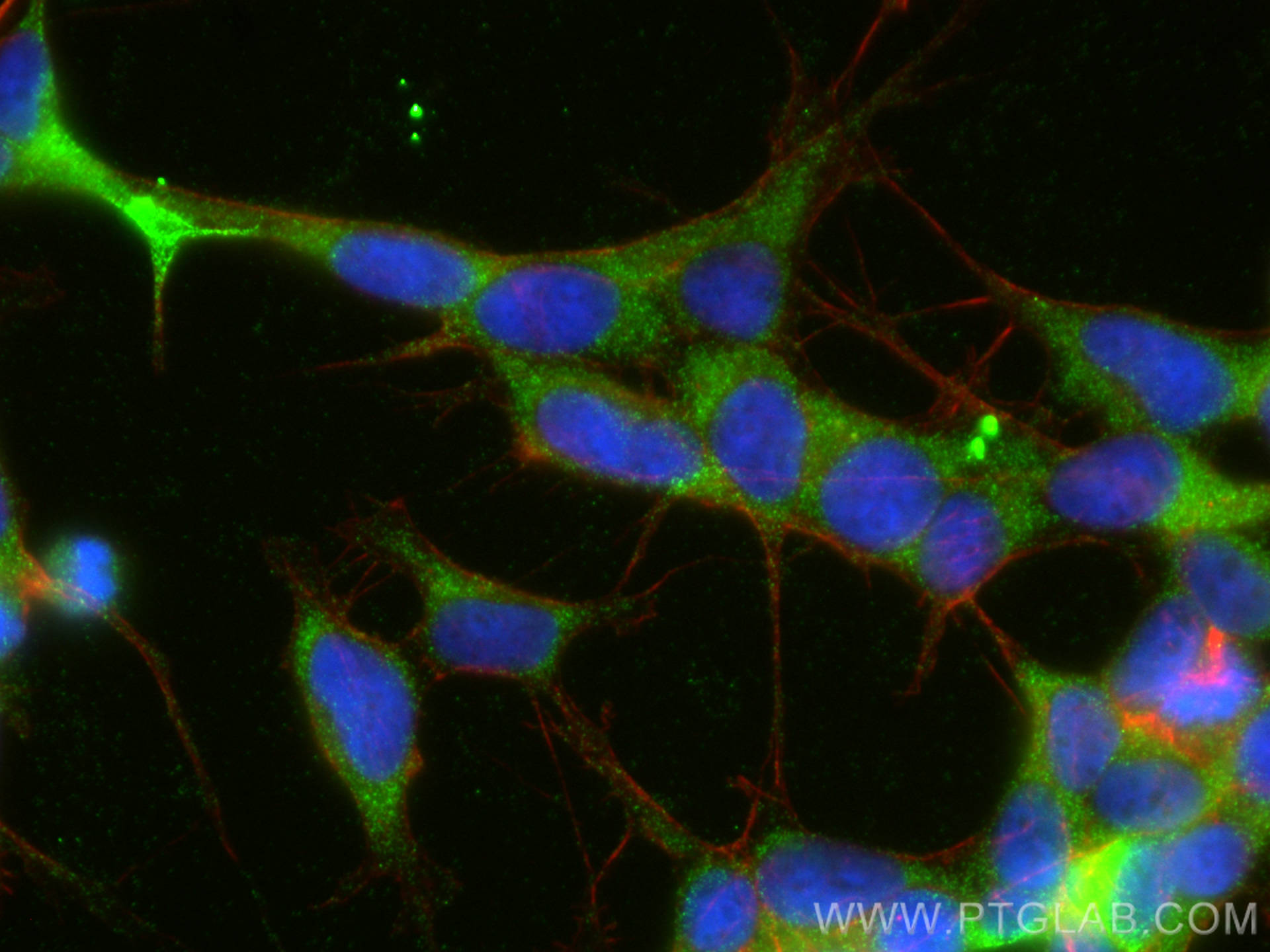Validation Data Gallery
Tested Applications
| Positive WB detected in | SH-SY5Y cells, fetal human brain tissue |
| Positive IHC detected in | human gliomas tissue, mouse brain tissue, rat brain tissue Note: suggested antigen retrieval with TE buffer pH 9.0; (*) Alternatively, antigen retrieval may be performed with citrate buffer pH 6.0 |
| Positive IF-P detected in | mouse brain tissue |
| Positive IF-Fro detected in | mouse brain tissue |
| Positive IF/ICC detected in | SH-SY5Y cells |
Recommended dilution
| Application | Dilution |
|---|---|
| Western Blot (WB) | WB : 1:2000-1:12000 |
| Immunohistochemistry (IHC) | IHC : 1:50-1:500 |
| Immunofluorescence (IF)-P | IF-P : 1:50-1:500 |
| Immunofluorescence (IF)-FRO | IF-FRO : 1:50-1:500 |
| Immunofluorescence (IF)/ICC | IF/ICC : 1:50-1:500 |
| It is recommended that this reagent should be titrated in each testing system to obtain optimal results. | |
| Sample-dependent, Check data in validation data gallery. | |
Published Applications
| WB | See 12 publications below |
| IHC | See 1 publications below |
| IF | See 40 publications below |
Product Information
13925-1-AP targets DCX in WB, IHC, IF/ICC, IF-P, IF-Fro, ELISA applications and shows reactivity with human, mouse, rat samples.
| Tested Reactivity | human, mouse, rat |
| Cited Reactivity | human, mouse, rat, hamster |
| Host / Isotype | Rabbit / IgG |
| Class | Polyclonal |
| Type | Antibody |
| Immunogen |
CatNo: Ag4945 Product name: Recombinant human DCX protein Source: e coli.-derived, PGEX-4T Tag: GST Domain: 1-360 aa of BC027925 Sequence: MELDFGHFDERDKTSRNMRGSRMNGLPSPTHSAHCSFYRTRTLQALSNEKKAKKVRFYRNGDRYFKGIVYAVSSDRFRSFDALLADLTRSLSDNINLPQGVRYIYTIDGSRKIGSMDELEEGESYVCSSDNFFKKVEYTKNVNPNWSVNVKTSANMKAPQSLASSNSAQARENKDFVRPKLVTIIRSGVKPRKAVRVLLNKKTAHSFEQVLTDITEAIKLETGVVKKLYTLDGKQVTCLHDFFGDDDVFIACGPEKFRYAQDDFSLDENECRVMKGNPSATAGPKASPTPQKTSAKSPGPMRRSKSPADSANGTSSSQLSTPKSKQSPISTPTSPGSLRKHKDLYLPLSLDDSDSLGDSM 相同性解析による交差性が予測される生物種 |
| Full Name | doublecortin |
| Calculated molecular weight | 402 aa, 45 kDa |
| Observed molecular weight | 40 kDa |
| GenBank accession number | BC027925 |
| Gene Symbol | DCX |
| Gene ID (NCBI) | 1641 |
| RRID | AB_2088476 |
| Conjugate | Unconjugated |
| Form | |
| Form | Liquid |
| Purification Method | Antigen affinity purification |
| UNIPROT ID | O43602 |
| Storage Buffer | PBS with 0.02% sodium azide and 50% glycerol{{ptg:BufferTemp}}7.3 |
| Storage Conditions | Store at -20°C. Stable for one year after shipment. Aliquoting is unnecessary for -20oC storage. |
Background Information
DCX (Doublecortin) is a microtubule-associated protein that is essential for normal brain development. DCX is expressed in migrating neurons throughout the central and peripheral nervous system during embryonic and postnatal development. Anti-DCX antibodies are widely used for detection of neurogenesis. It's also a common neuron marker since its expression is specific to neurons.
Protocols
| Product Specific Protocols | |
|---|---|
| IF protocol for DCX antibody 13925-1-AP | Download protocol |
| IHC protocol for DCX antibody 13925-1-AP | Download protocol |
| WB protocol for DCX antibody 13925-1-AP | Download protocol |
| Standard Protocols | |
|---|---|
| Click here to view our Standard Protocols |
Publications
| Species | Application | Title |
|---|---|---|
Nat Commun m6a methylation orchestrates IMP1 regulation of microtubules during human neuronal differentiation | ||
Nat Commun Ten-eleven translocation 1 mediated-DNA hydroxymethylation is required for myelination and remyelination in the mouse brain. | ||
Phytomedicine Ginsenoside Rg1 enriches gut microbial indole-3-acetic acid to alleviate depression-like behavior in mice via oxytocin signaling | ||
PLoS Pathog Human cytomegalovirus pUL97 upregulates SOCS3 expression via transcription factor RFX7 in neural progenitor cells | ||
Brain Behav Immun Bacteroides species differentially modulate depression-like behavior via gut-brain metabolic signaling. | ||
J Neuroinflammation Exosomes derived from bone-marrow mesenchymal stem cells alleviate cognitive decline in AD-like mice by improving BDNF-related neuropathology. |

